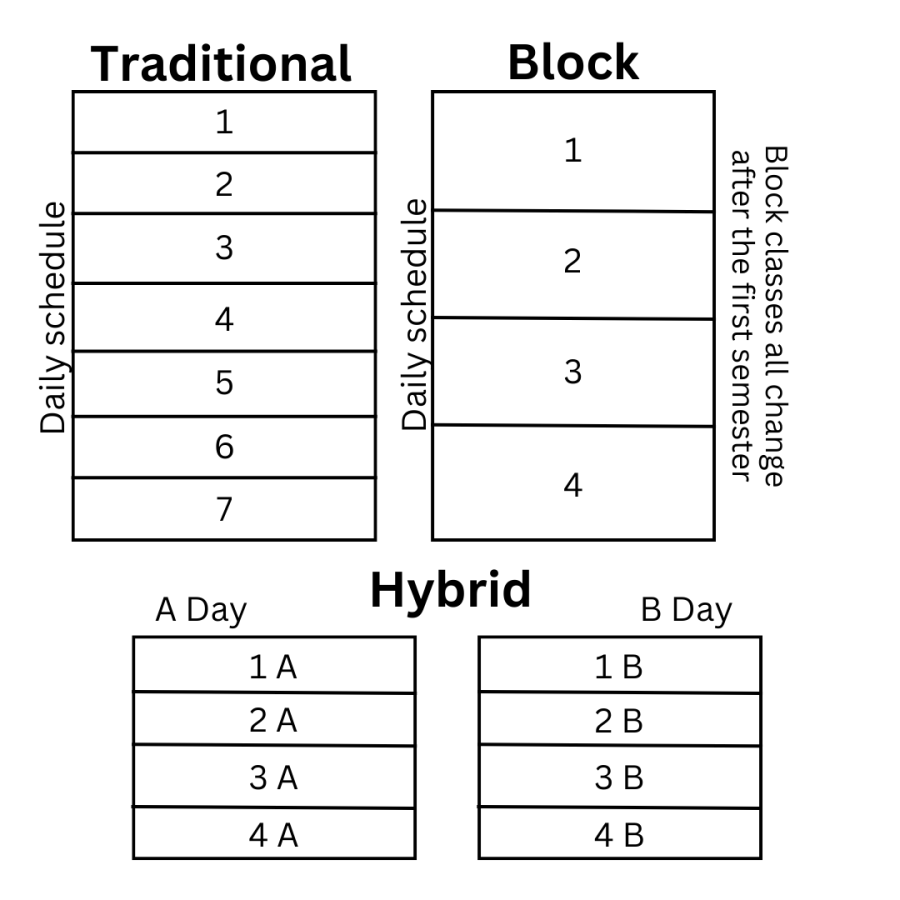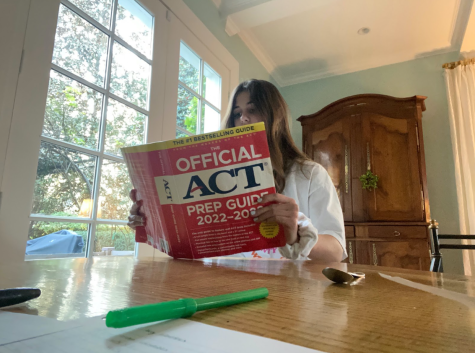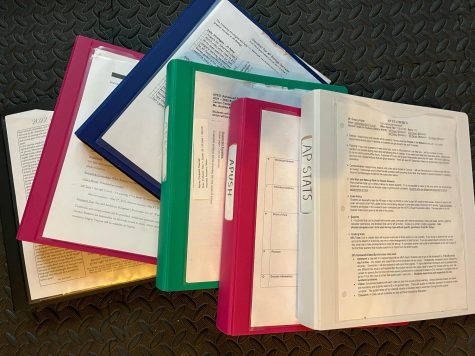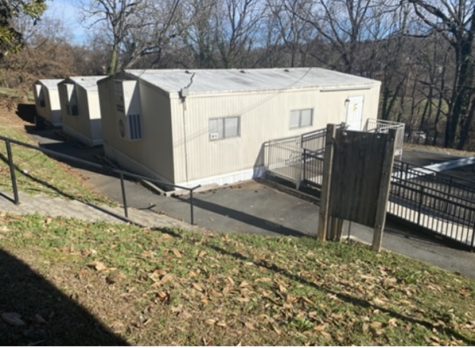Which schedule type is suitable for RJR?
Photo provided by Olivia Stubbs.
Here’s an infographic detailing what each schedule would look like in terms of period number and class length.
February 7, 2023
Recently, in the Winston-Salem Forsyth County Schools district, there has been a lot of talk about schedule changes. Rumors have spread that if the schedule changes, students won’t be able to take as many AP courses, homework will be due the next day, or even the idea of the same ninety-minute classes every day for an entire semester. But what’s the truth about the schedule change?
The truth is, RJ Reynolds High Schools’ schedule is not going through major changes any time soon. Many people have seen the survey sent out to faculty, students, and parents providing a choice between a seven-period per day “traditional” schedule and a schedule with all semester-long block classes. These options surprised many, as they differ significantly from the current “hybrid” schedule, where students have eight periods total on an A-day B-day schedule.
“The District’s survey showed roughly a 50/50 split on the preference for block vs. year long,” WSFCS School Board member Deanna Kaplan said.
These survey results beg the question— which schedule type do the students and faculty actually want, and which one is truly the best for learning?
Imagine a day with seven class periods: quick, intensive, daily classes. To some, this may sound amazing, but to others, this is a nightmare. This schedule is known as the “traditional model.”
“I taught the traditional schedule several years whenever I first came to Winston, and I loved it so much,” English teacher Stephanie Walters said. “I liked having planning periods throughout the day. I liked that the classes were short, so there was less time for busywork, and everybody was on task.”
Along with Walters, many teachers enjoy shorter classes that are easier to design. Principal Calvin Freeman, another advocate for this schedule, also finds value in short class periods.
“We want to maximize learning time and get what we need out of the time in the classrooms,” Freeman said.
The traditional schedule also gives students time in their classes daily, preventing learning loss.
“I find in A-day, B-day right now, you do something on A-day, and then you forget everything over B-day,” Walters said. “Then you come back, and you kind of lose the momentum that you built up.”
Freeman also believes that seeing students every day builds connections that other schedules cannot support. These vital student-teacher relationships aid learning and help students feel supported at school.
Many feel strongly that the traditional schedule is the best, but it does have critics. Math teacher Lucas Galbier worries that shorter classes would need to be longer to accomplish substantial work. Galbier also likes the time that the current schedule provides students for homework.
“With the block schedule where you’re having a class every other day, people worry about learning loss,” Galbier said. “I think it’s a good break; it gives them time to work on stuff between classes.”
Sophomore Caroline Lovett agrees that it helps students improve time management skills.
“It’s a lot easier to organize your afterschool work when you have half of it to do one day and the other half to do the next day,” Lovett said.
The schedule that Lovett and Galbier want is the “hybrid model” on which RJR currently runs. Hybrid has many benefits but is also infamous for causing scheduling issues. These issues caused the district to explore other options, including the traditional and the semester-long block schedules. The latter hasn’t seemed to garner any support at RJR.
“When it comes to language learning, it could be one or even two semesters between language levels,” French teacher Victoria Schmoyer said. “Without having a continual language, there would be a lot of loss.”
Semester-long classes also inhibit learning by limiting AP classes. If students took an AP course in the fall, they would have to wait until May to take the exam, and if they took an AP in the spring, they would have less than three months to cover the entire coursework.
“AP classes, to me, are the biggest situation because those are tests that we can’t control,” Walters said. “Those are going to be at the beginning of May, no matter what. It would be a disservice to go to all block for those students.”
With little to no support at RJR, it doesn’t seem like the semester-long block schedule is in our future. Yearlong classes in hybrid and traditional schedules support more substantial learning and help teachers get to know their students. Both models also fit relatively well with the Career Center’s schedule, which is essential to many students.
Kaplan said that due to the feedback, the current hybrid schedule will continue for the foreseeable future, possibly with minor changes. So for now, RJR is sticking with the hybrid schedule, a decision followed with much support from teachers and students.













